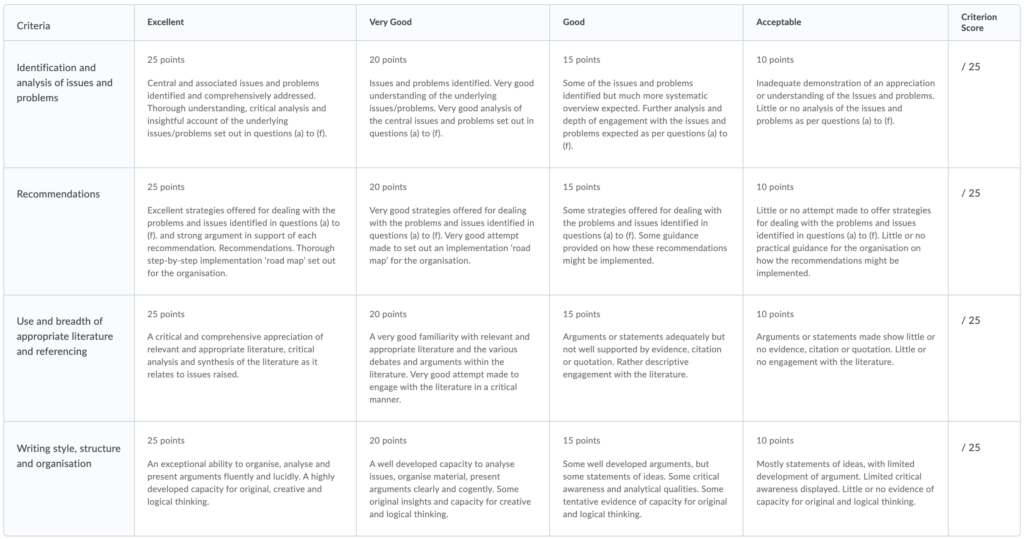Creating Rubrics:

A rubric is a tool instructors use to evaluate student assignments against a series of criteria with levels of achievement, often presented in a table of rows and columns. Descriptions are entered for each level of achievement within a criterion, making rubrics a powerful tool for providing feedback when displayed to students.

Some features of rubrics are described below:
- Rubrics can be used to grade assignments, and tend to make grading more consistent, especially when grading large cohorts.
- Points can be divided between criteria and assigned to levels of achievement.
- Rubrics can be made available to students before assignment submission to help students understand instructor expectations.
- Rubrics can be withheld until after assignment grading to provide feedback for student achievement.
- Instructors can create rubrics for any kind of assignment, and they can also be copied, edited and reused, across multiple assignments and modules.
Take a look at the PDF guide to creating rubrics, or follow the video tutorials below.
How to create a Rubric?
How to create a Rubric?
How to attach a Rubric to an assignment?
How to attach a Rubric to an assignment?
How to grade with a Rubric?
How to grade with a Rubric?
How to reuse Rubrics?
How to reuse Rubrics?
Additional Notes
Additional Notes
Rubrics scores can be distributed across criteria and total up to whatever the instructor prefers. When the score within the rubric is sent to the grade item, it is always the grade schema attached to the grade item which determines the resulting grade rather than the rubric. For that reason it is important to consider not only the rubric, but the grade schema that is to be applied.
For example: A rubric allows a total of 100 points, and a score of 70 is awarded to a student. As the rubric applies 70 to the grade item, it is the schema attached to the grade item that determines how that is interpreted. So where the instructor has attached the standards 40% schema A- will apply (70=A-). But the grade may be different if another schema was attached.
So while scores can be set by the rubric, it always ultimately the schema that determines the grade.
The rubric can also be used to apply purely qualitative feedback like ‘Excellent’, ‘Satisfactory’, etc. The big attraction of rubrics is that a lot more detail can also be added with longer text description of levels of achievement.


